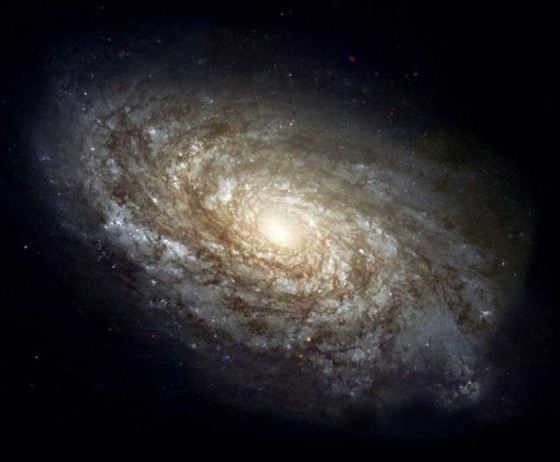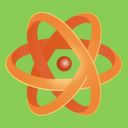
For the first time, astronomers have observed the celestial object known as “Hygeia” in the main asteroid belt, with a level of detail that allowed them to study its surface and dimensions.
Based on its characteristics, the object is now classified as a “dwarf planet” since it meets the necessary criteria: it orbits the Sun, is not a satellite, has not cleared its orbit of other objects, and has a spherical shape due to its own gravitational force. The confirmation of this last requirement was made possible by new research conducted using the advanced SPHERE receiver on the Very Large Telescope (VLT).
The estimated diameter of this planet is around 430 km, while the most well-known dwarf planet, “Pluto,” has a diameter of approximately 2400 km. Another surprising finding for astronomers was the absence of impact craters on the surface of this planet.
What will be demonstrated and narrated in this video:
– The GIGEIA picture and the data that can be extracted from it.
– The importance of studying asteroids.
– The definition of “Dwarf Planets” and their distinctions from planets and asteroids.
– The SPHERE receiver on the Very Large Telescope (VLT).

7.2K posts 76.9K followers
Community Guidelines
ATTENTION! In light of the current surge in the pandemic and the controversy surrounding vaccinations, aggressive anti-vaxxers will be banned without prior notice and their particularly ignorant comments will be hidden.
Basic Publishing Requirements
– Posts must be relevant to science, recent discoveries, or the scientific community’s life and must provide a link to a reliable source.
– Posts should avoid using clickbait or misleading phrases whenever possible.
– Scientific articles should come with a description that is accessible to the general public. Material that is overly technical may be rejected.
– Videos must include a description.
– Titles should accurately reflect the essence of the study.
– If a post includes content that is originally written or filmed in a foreign language, the Russian version must include all the main points.
Not accepted for publication
– Exact or condensed copies of magazine and newspaper articles. Posts about the latest scientific advancements should include your own explanatory commentary or provide reviews of multiple articles.
– Funny posts that also include accurate and simplified copies from popular sources, citations from anthologies. Scientific humor is welcome, but it should be published in substantial amounts and not just to fill the rating with individual quotes from a large collection.
– Personal insults directed at a user or a specific group of users are not allowed.
– Trying to promote or advertise something within the community is against the rules.
– Continuously attempting to post materials that do not adhere to the rules is not permitted.
– Violating the overall site rules is not tolerated.
– The community moderation team has the final say on whether a post or comment complies with the rules. Requests to lift bans or complaints about moderation can be submitted to the community administrator. Complaints against the administrator can be directed to @SupportCommunity and the peekaboo community.

What’s so astonishing? If even a small meteorite, let alone a medium-sized one, collided with this planet, where would Kudm fly off to, in what tar-tarns? Maybe that’s why there are so few dwarf planets, because they go whizzing around the universe like skittles when they encounter other celestial bodies for the first time?
Monitoring the movement of a planet, keeping track of its location every day, is a fascinating and fulfilling task.
Although I have great respect, I only stopped watching because of the presenter; he used to be better.

Saturn, August 18, 2023, 00:01 AM
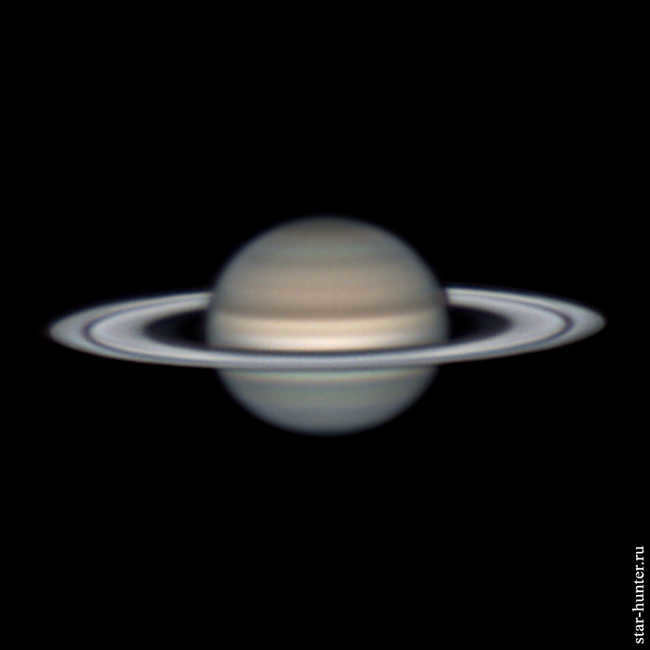
Equipment used:
-Sky-Watcher Dob 14 (350/1600) Retractable SynScan GOTO telescope
-Barlow refinery PAG 3-5x lensblock
-atmospheric dispersion corrector ZWO ADC
-ZWO IR-cut light filter
-astronomical camera ZWO ASI 183MC.
Observation Location: Caucasus Mountain Observatory, Moscow State University, Karachay-Cherkess Republic.
Excerpt from the original video footage:

The Jellyfish Nebula captured using three narrow-band filters
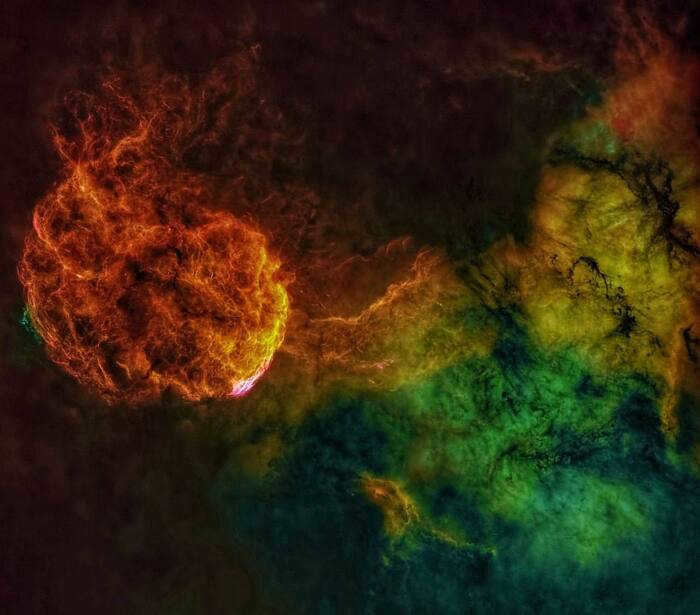
Introducing the fresh arrival: Comet C/2023 P1 (Nishimura)
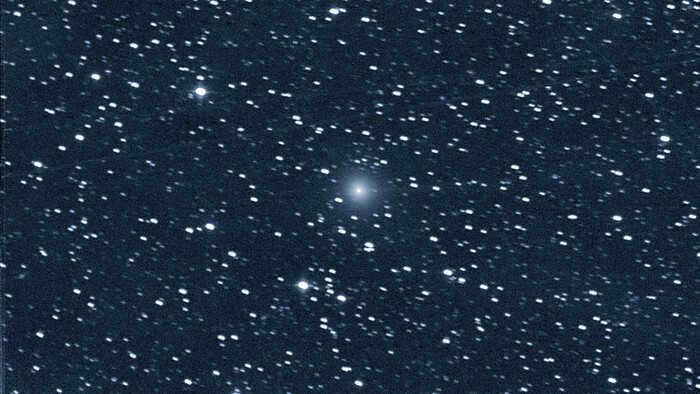
Comets are unexpected visitors. While the familiar ones may disappoint us with their predictability (which is not surprising, as they have had time to deplete and melt during their repeated approaches to the Sun), newly discovered comets can often be bright and spectacular. However, this is not always the case.
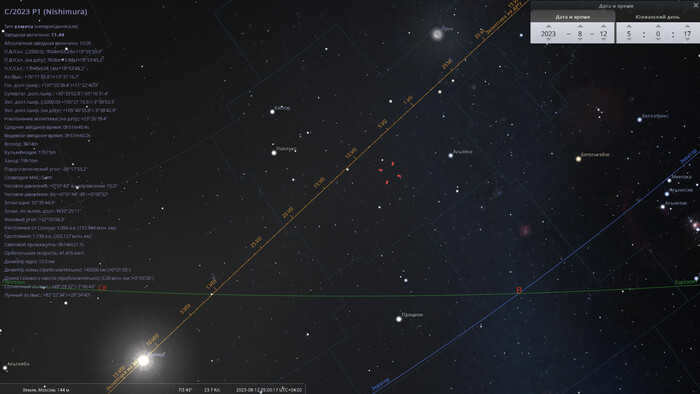
The location of comet C/2023 P1 in the constellation Gemini on the morning of August 12, 2023 (during its initial discovery).
However, the brightness of the comet has increased with each passing night. And now, after a week, it has already reached a magnitude of 10 stars. It is now visible through medium-power amateur telescopes. Of course, Nishimura’s comet is still best observed before dawn. Nevertheless, the overall visibility conditions have slightly improved since its initial detection.
What Comes Next?
On September 18, 2023, the comet will reach its closest point to the Sun, known as perihelion, at a distance of 33 million kilometers from its glowing surface. This is approximately twice as close as Mercury. However, unlike Mercury, which is a solid rock, the comet is composed of ice. As a result, the ice will begin to melt and vaporize well before reaching perihelion. In fact, this process is already underway, and astronomers have observed a small tail, measuring only 8-10 angular minutes in length. This tail is comprised of gases and dust emitted from the heated core of the comet.
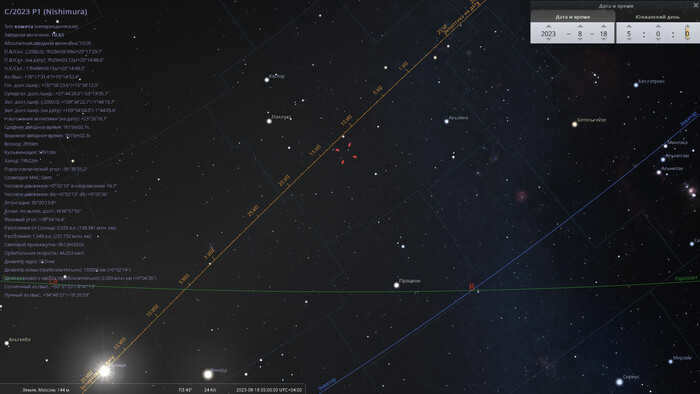
Comet C/2023 P1 can be found in the constellation Gemini on the morning of August 18, 2023.
Currently, the comet is in the process of crossing the Earth’s orbit and is located on the opposite side of the Sun from us. As a result, the distance between Earth and the comet is significant, measuring one and a half astronomical units. However, this situation is quickly changing.
By the beginning of September, the comet will be only 1 astronomical unit away from the Earth (and only ½ ae away from the Sun). The angular distance between the Sun and the comet (elongation) will decrease slightly from 35 to 30 degrees. However, this slight inconvenience will be offset by the growing difference in declination between the Sun and the comet. In fact, the comet’s tail will be visible directly above the Sun, allowing for a good view of it even before sunrise.
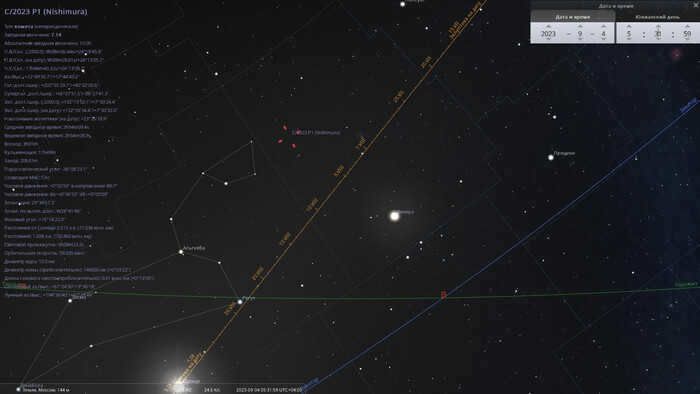
In the constellation of Cancer, on the morning of September 4, 2023, you can find the position of comet C/2023 P1.
Up in the sky, Comet C/2023 P1 Nishimura will be situated in the constellation of Cancer, close to the border with Leo constellation (the well-known “Lion’s Head” asterism is a great reference point), and nearby, in the same constellation, the bright Venus will also be shining. By September 4, 2023, the comet’s brightness will reach the 7th magnitude, making it an easily observable object with binoculars.
On the morning of September 9, 2023, comet C/2023 P1 will be only 1 degree (west) away from the star Adhafera (Zeta Leo), and its brightness will increase to the 6th star magnitude. In areas with optimal conditions (such as mountains, deserts, or steppes), the comet will be visible to the naked eye.
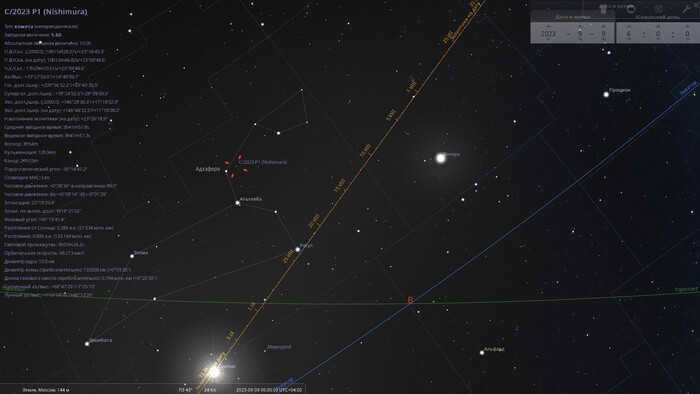
The placement of comet C/2023 P1 in the Leo constellation on the morning of September 9, 2023
Regrettably, the angular separation from the Sun will decrease to 22 degrees, however, the comet will ascend even further above the ecliptic, and despite this slight elongation, its visibility will endure for at least one and a half (and possibly even two) hours.
In the subsequent days, the comet’s brightness will continue to intensify, but its angular separation from the Sun will decrease, thereby complicating the observation conditions.
In the early hours of September 12th, the comet’s brightness will reach a magnitude of 5 stars, while its elongation will decrease to 17 degrees. Meanwhile, the comet will remain visible above the Sun, providing an opportunity to spot it in the morning twilight near the star Zosma (Delta Leo).
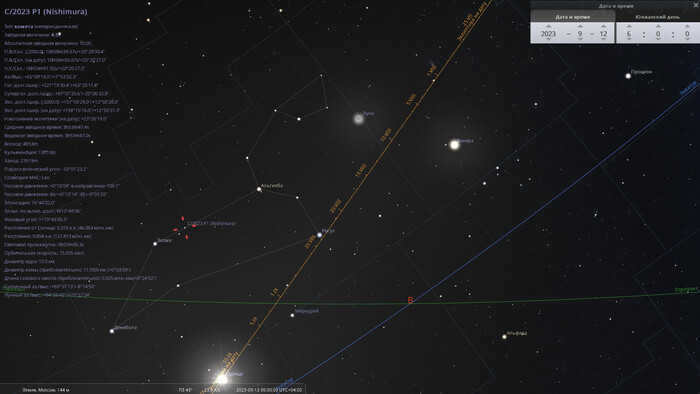
On the morning of September 12, 2023, in the constellation of Leo, you can observe the position of comet C/2023 P1.
By September 15, the comet will come close to the 2nd magnitude star Denebola (Beta Leo). During this time, the comet itself will only be slightly dimmer, with a stellar magnitude of around 3rd. However, it will be quite challenging to see both celestial bodies against the bright morning sky.
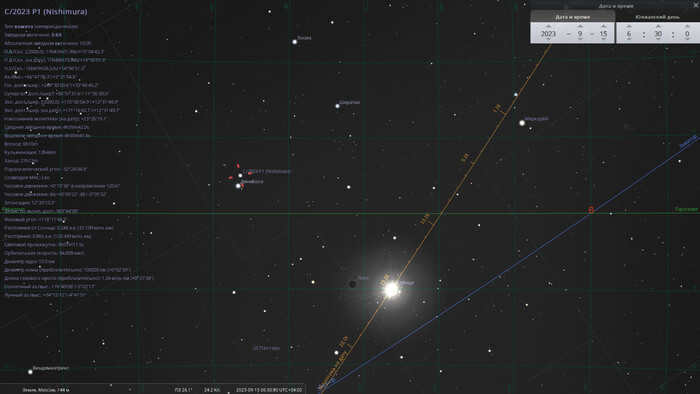
The position of comet C/2023 P1 in Leo on the morning of September 15, 2023
During perihelion, the comet is expected to have a brightness of approximately 2nd magnitude. In the evening of September 15, in the northern hemisphere, the comet will be visible shortly after dusk in the northern part of the Virgo constellation. However, in the southern hemisphere, it will be challenging or even impossible to spot the comet due to its higher declination compared to the Sun.
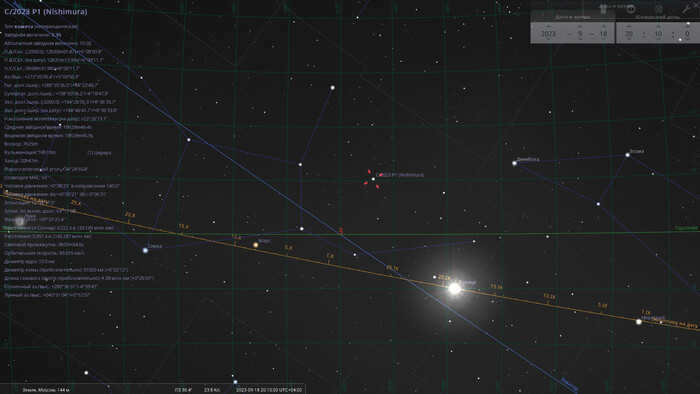
On the evening of September 18, 2023, comet C/2023 P1 (Nishimura) will be located in the constellation Virgo as it reaches its closest point to the Sun.
As the days go by, the comet will gradually move further into the southern celestial hemisphere and will cross the equator around the same time as the Sun, which will happen on September 21, 2023, a day before the autumnal equinox. By that time, the brightness of the comet will decrease to 4.5m.
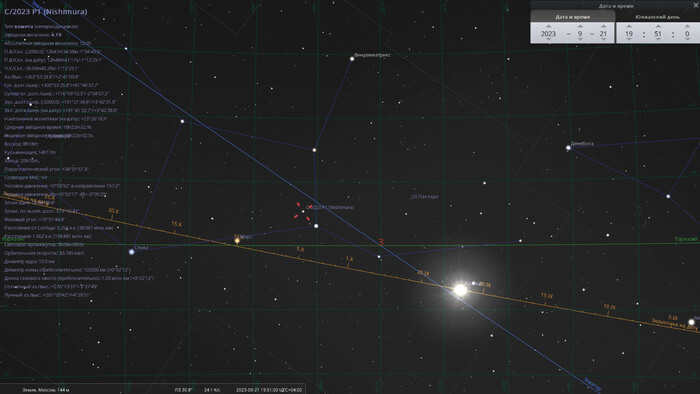
On the evening of September 21, 2023, you can observe comet C/2023 P1 in the constellation Virgo.
If you want to see comet C/2023 P1 Nishimura, you can do so on the evening of October 1, 40 minutes after sunset, near the border of the constellations Virgo and Raven. However, you will need to be in Australia or the mid-latitudes of South America, or maybe at the southern tip of Africa. The brightness of the comet will only be about 7.5m, so it may not be worth buying tickets just for this event.
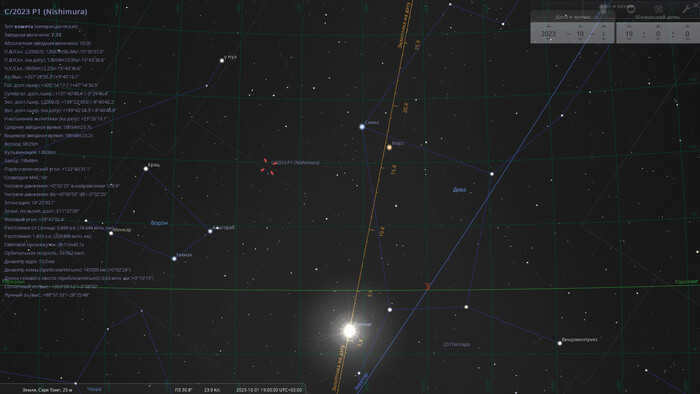
The comet C/2023 P1 can be observed on the evening of October 1, 2023 at the border of the Virgo and Corvus constellations (for an observer in Cape Town, South Africa).
By the middle of October, the comet will move further south – to the tail part of the Hydra constellation. Its brightness will decrease to the 10th magnitude, and visibility conditions, even in the southern hemisphere, will become unsatisfactory. In fact, at this point, the comet will no longer be visible to astronomy enthusiasts anywhere on Earth.
When will the comet come back?
Not on our watch. Currently, the exact orbital elements have only been estimated. These approximations are sufficient to determine the comet’s position in the sky for the next few months, but the period of its orbit remains unknown. Despite being classified as a long-period comet, its orbit has an eccentricity of one, indicating that it is close to being parabolic or potentially even is. This means that the comet may return to the Sun in a million years or perhaps never.
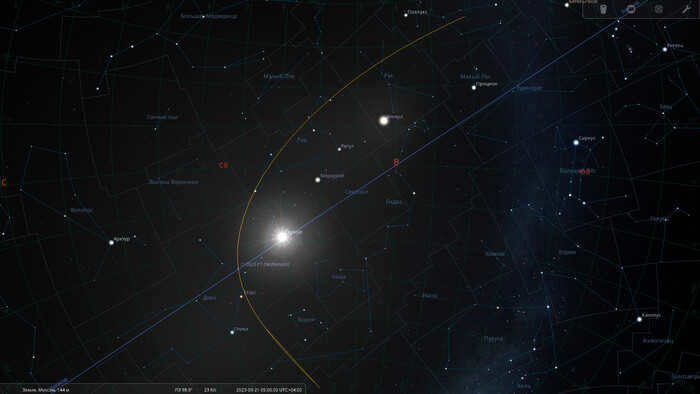
The path of comet C/2023 P1 Nishimura from August 12 to November 1, 2023.
All maps were created with the assistance of the Stellarium software.
The most desirable properties in the solar system
In 1957, the Soviet Union launched the first artificial satellite, a well-known fact. Since then, numerous space agencies, private companies, and research institutes have been expanding their presence in the solar system. Over the years, they have conquered countless frontiers, making it impossible to list them all. Despite the vast expanse of space, certain areas are more enticing than others, such as the Lagrange points. These points, named after an 18th-century mathematician who determined their location, serve as valuable islands of stability in our ever-changing and turbulent corner of the cosmos.
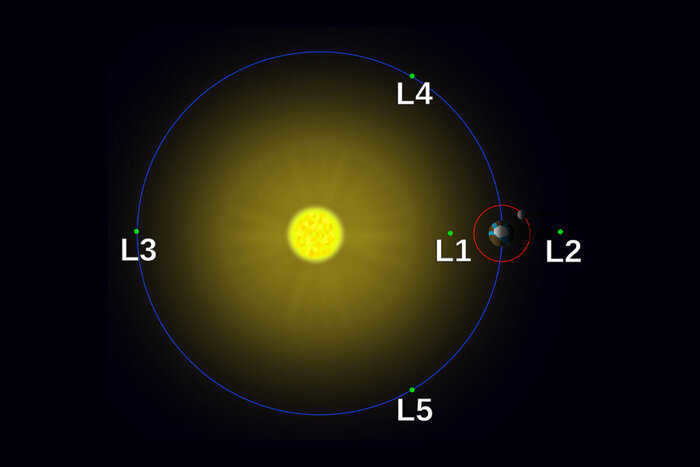
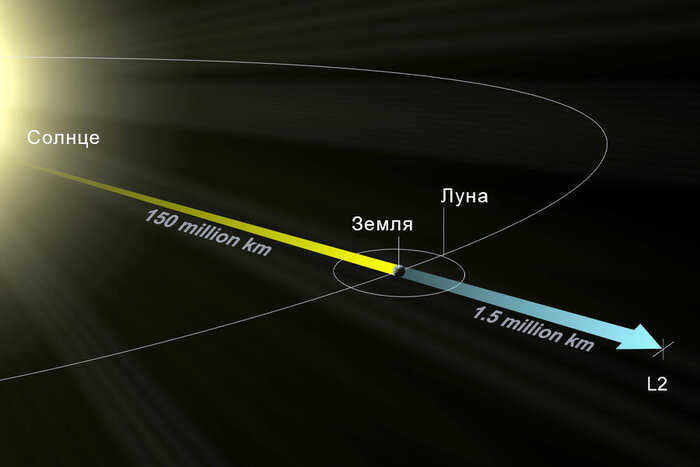
However, our system does not have many regular “parking lots.” Interactions between massive objects create five Lagrangian points for each pair of participants. For instance, the Sun has five points where it interacts with any of the planets, and each planet has the same number of interactions with its satellites. When we tally them all up, we find that there are over 1000 Lagrangian points in our system. However, only a few of them are actually useful for space explorers. Many of these points are challenging to access, and as we will discover later on, they are not very stable. Currently, only two of these locations are actively utilized, but this situation may change in the future.
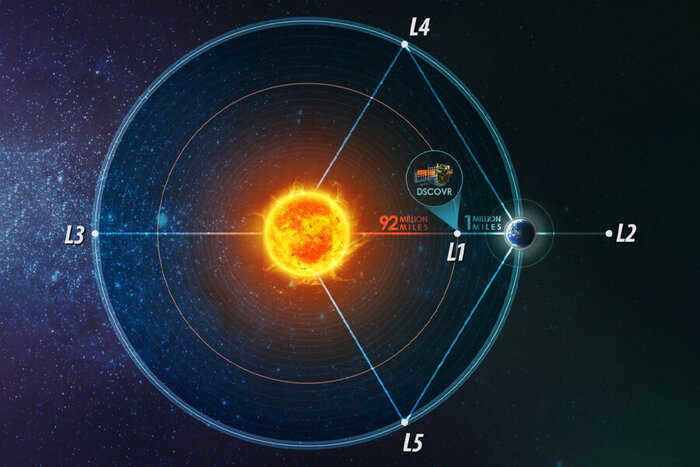
Deep Space Climate Observatory is a spacecraft from the United States that is used to observe the Sun and Earth. It is situated at Lagrangian point 1
L2 is located on the opposite side of the Earth and is equidistant. This positioning ensures that it is effectively shielded from the sun’s rays and offers exceptional prospects for observing the cosmos from a different perspective. In 2022, the James Webb telescope, which astronomers have eagerly anticipated for twenty years, commenced operations at this location.
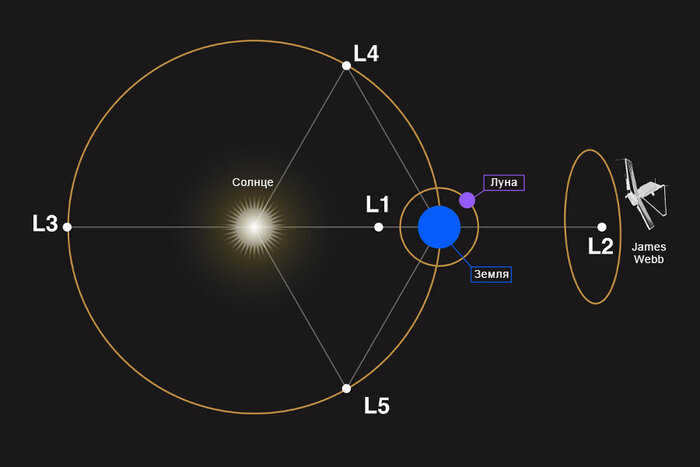
L3 is located in the most enigmatic region, precisely opposite to Earth’s position in its orbit around the Sun. This particular spot in the vastness of the cosmos remains concealed from our planet’s surface, making it a subject of fascination for science fiction authors. However, from a scientific perspective, L3 offers limited significance.
The L4 and L5 points exhibit some differences compared to the previous ones. The key distinction lies in the fact that the first three points in each set of Lagrangian points experience a slight instability, causing the objects within them to gradually shift sideways. Although it is possible to maintain them in these positions with some effort, it still requires additional resources. In certain pairs of celestial bodies, the stability of L4 and L5 may not be particularly high, especially if their masses differ by a factor of less than 25. However, in the Sun-Earth system, where the star vastly outweighs the planet, these points demonstrate remarkable stability. Furthermore, they appear to have a magnetic pull on various objects – particularly noteworthy are the L4 and L5 points of the Sun-Jupiter system, which have accumulated thousands of asteroids.
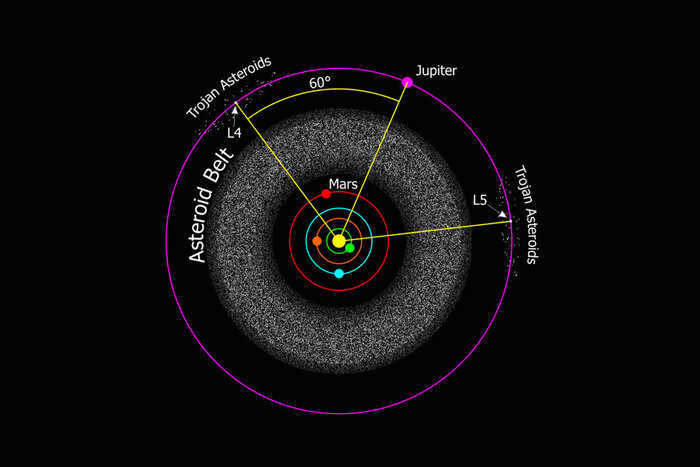
Every Lagrangian point in our solar system possesses its own unique characteristics. Some of them present opportunities for gathering construction materials, if one considers drifting asteroids as such. Others could potentially serve as refueling stations to replenish the fuel supply for spacecrafts venturing into the vastness of space. It is also conceivable that human colonies could be established in these locations. Of course, this is a matter that pertains to the distant future, a future that we may not be fortunate enough to witness, given the current state of affairs on Earth. However, it is always pleasant to indulge in dreams, isn’t it?
We deeply appreciate all of our readers. If you wish to provide financial support (via the button provided below), your name/nickname will be featured at the conclusion of our next post. This is our way of expressing our gratitude for your kindness and support!
Objects that revolve around the sun are astonishingly large when compared to human standards. Even the smallest planet in our solar system is difficult to comprehend, as there are no similar bodies within our experience. However, in the grand scale of space, these objects appear minuscule. Below, we will examine the smallest of the sun’s planets.
The ninth
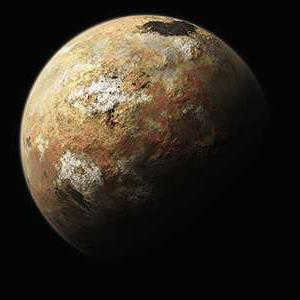
In terms of size, Pluto is the smallest planet in our solar system. If you haven’t been keeping up with astronomical news for the past nine years, Pluto was discovered in 1930 and is located 5.913 billion kilometers away from the sun. Initially, scientists believed it was comparable in mass to Earth, but later research revealed that Pluto is even smaller than the Moon.
Further exploration of the distant regions of our solar system led to the identification of the Kuiper belt, where a vast array of relatively small objects were discovered. This raised the question of how to classify these objects. The scientific community encountered challenges due to the absence of a precise definition of the term “planet,” which led to confusion regarding how to categorize bodies that were similar in mass to Pluto (and several such bodies were indeed found). This matter was deliberated upon during the 2006 IAU conference.
During that time, scientists developed a definition for what constitutes a planet. A planet is a celestial body that orbits the Sun, maintains a nearly perfect round shape known as hydrostatic equilibrium, and is large enough to clear its orbit of other objects. This definition perfectly applies to the planets in our solar system, ranging from Mercury to Neptune. However, Pluto did not meet the criteria due to its orbit not being free of other celestial bodies. As a result, Pluto was reclassified as a dwarf planet, along with other similar objects.
Currently, Pluto is one of several dwarf planets that have been discovered within our solar system. Other examples include Ceres, which is located in the Main Asteroid Belt, as well as various celestial bodies within the Kuiper Belt, such as Erida, which actually surpasses Pluto in terms of mass. In 2006, the title of “smallest planet in the solar system” was officially given to Mercury.
A parting message
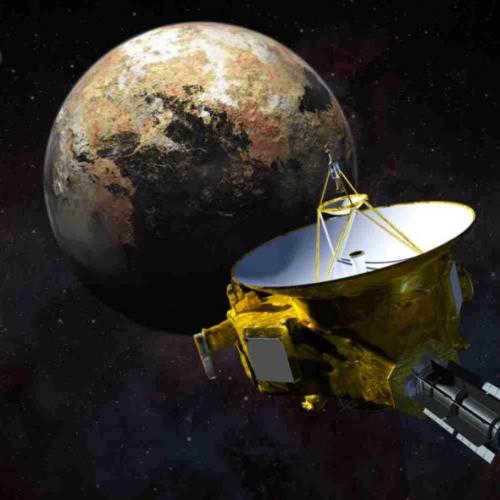
The exploration of distant areas of the solar system remains ongoing. While Pluto is now classified as a dwarf planet, it still holds great interest. In 2006, the New Horizons spacecraft was launched towards Pluto, and just recently in July 2015, it successfully reached its destination. The spacecraft flew as close as possible to the object and transmitted a wealth of valuable information back to Earth.
The equipment managed to capture the solar eclipse caused by Pluto, obtain an image of its surface, and examine its largest moon, Charon. Scientists analyzing the information are already emphasizing its undeniable importance. There is a belief that Pluto possesses an atmosphere containing hydrocarbons. Additionally, there are indications of recent geological activity on its surface, which could suggest the presence of an underground ocean on the dwarf planet.
The data transmitted by the equipment is still undergoing analysis. The “New Horizons” mission will continue until 2020. During this time, it will explore the objects within the Kuiper belt after moving away from Pluto.
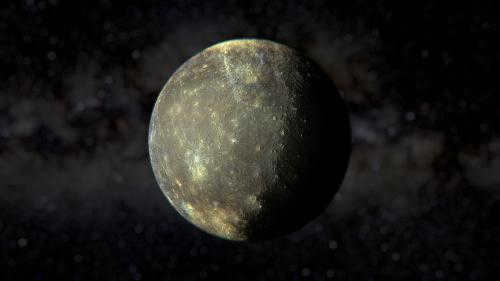
Therefore, starting from August 2006, the tiniest planet within the solar system has been identified as Mercury. It revolves in the closest proximity to our star and maintains an average distance of 47 million kilometers from the Sun. Despite being considerably closer to Earth compared to Pluto, there are still many mysteries surrounding Mercury. One major hurdle in conducting research is its close proximity to the scorching star.
Since the advent of the space era, only two spacecrafts have been dispatched to explore this planet: Mariner-10 and Messenger. The first mission was carried out between 1974 and 1975, resulting in a plethora of images capturing up to 45% of Mercury’s surface. These images have provided valuable insights, leading to speculations about the existence of water ice in the planet’s polar craters.
The launch of “Messenger” took place in 2004 and it successfully reached its goal in 2011. During its mission, it was able to uncover the asymmetry of Mercury’s magnetic field in relation to its poles and extensively studied the chemical makeup of the planet. Unfortunately, in 2015, the spacecraft crashed onto the surface of Mercury, creating a crater that was 15 meters deep.
Unique Features
Mercury, the smallest planet in the solar system, is destined to preserve its distinct characteristics indefinitely. This is primarily due to its lack of atmosphere, which sets it apart from other celestial bodies. Much like the moon, Mercury’s surface is marked with craters resulting from meteorite impacts.
When compared to other objects in space, Mercury pales in size, even when compared to Jupiter’s moon Ganymede and Saturn’s moon Titan. However, Mercury is renowned for its extreme temperature fluctuations, ranging from -183ºC to 427ºC.
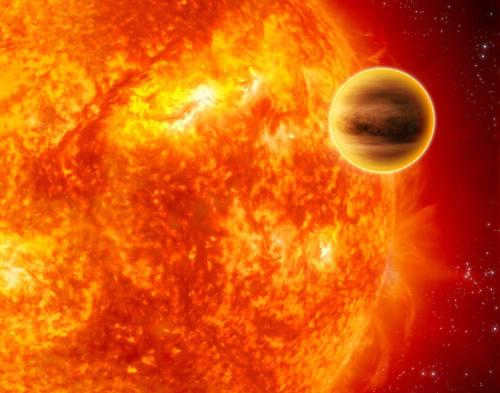
Presently, the tiniest planet in our solar system is also among the least explored. The unique characteristics of Mercury’s orbit and its close proximity to the Sun pose significant challenges for missions to this planet. Furthermore, it is challenging to observe Mercury from Earth. Nevertheless, advancements in technology and science offer hope for a better understanding of this enigmatic planet. A prime example of this is the New Horizons mission. Consequently, there is optimism that many of Mercury’s secrets will be unveiled in the near future.
The order of importance: from Pluto to Mercury
From 1930 until 2006, Pluto was considered to be the tiniest planet in the solar system. The initial reference to the existence of Pluto can be traced back to as early as 1905. It was only in 1930 that research was carried out, resulting in its discovery. Being located 5 billion kilometers away from Earth, this celestial object remained the least explored entity due to its distance and the intricacy of research endeavors.
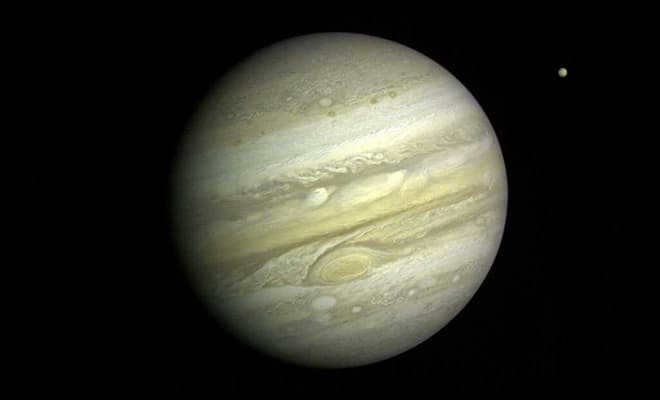
Astrology books that were published prior to 2006 provide a clear definition of the tiniest planet in the entirety of our solar system – Pluto. This planet has a mass which is five times smaller than that of Earth, specifically (1.305 ± 0.007)-1022 kg, a volume which is twenty times smaller (6.39-109 km³), and a temperature that ranges from -260 °C on one side to +400 °C on the other, remaining constant throughout the entire year.
The solar system initially consisted of a vast amount of gas and dust. As time went on, these minuscule particles of dust merged together, ultimately forming larger structures. This is exactly how the planets within our solar system came to be. In the early stages of scientific exploration, it was believed that Pluto was indeed an integral part of our solar system.
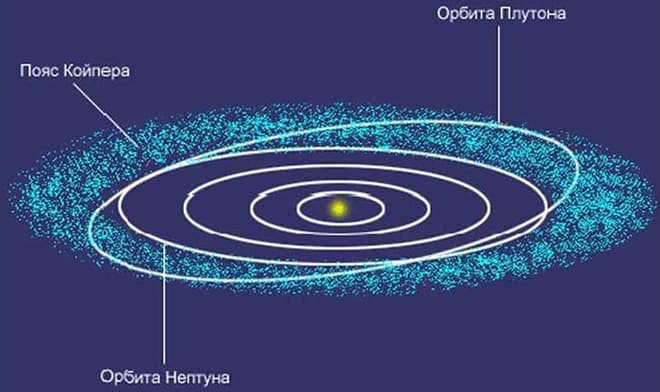
Nevertheless, subsequent explorations have revealed that this celestial body does not meet the criteria to be classified as a full-fledged planet, but rather as the first dwarf planet within the Kuiper belt. Presently, there is a divergence of opinions among astronomers: some advocate for Pluto to be reinstated as a “planet”, while others argue that Pluto possesses five satellites (Charon, Hydra, Nycta, Kerber, and Styx) and objects larger than the dwarf planet itself. Thus, the current designation is deemed valid.
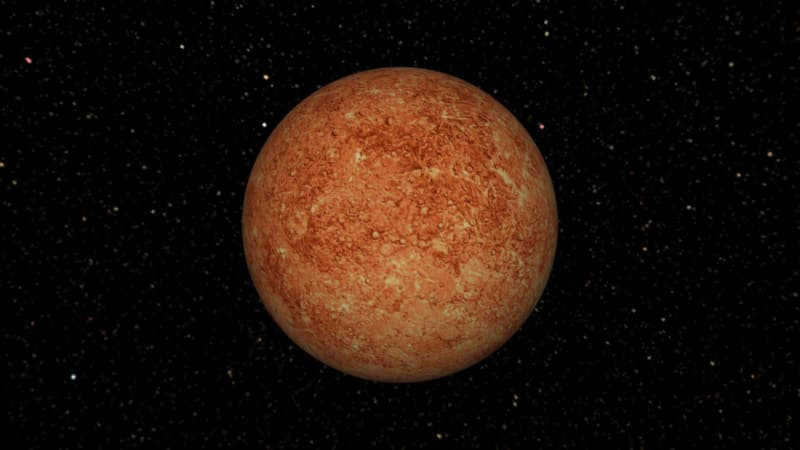
Directly following Mercury, there are three diminutive celestial bodies: Venus, Earth, and Mars. Situated behind these planets are the colossal gas giants: Saturn and Jupiter. Positioned even farther away are the remote celestial objects: Uranus, Neptune, and Pluto. Constantly orbiting around these planets is the frigid debris of the Kuiper belt. It is here that the remnants of the solar system accumulate: Oort cloud comets, which resemble icy snowballs and are the same age as the planets.
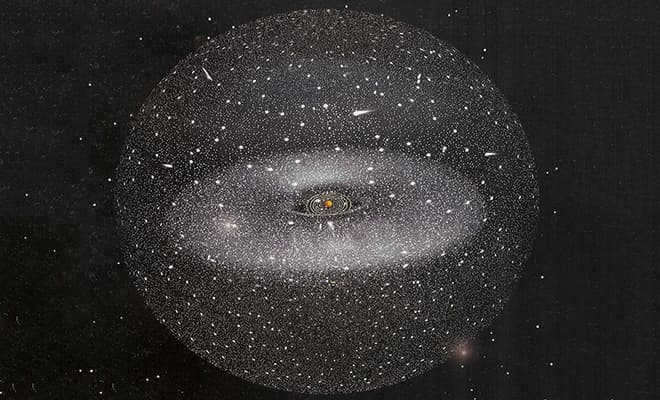
Mercury, being the nearest planet to the Sun, has a gravitational pull that attracts heavy elements, while lighter, gaseous elements tend to be drawn towards the distant gas giants, Saturn and Jupiter. This unique characteristic has resulted in Mercury becoming a solid rock. On our own planet, Mercury can only be observed under clear weather conditions, either at dawn or dusk. When positioned closer to the horizon, Mercury appears lower than Venus, appearing on the left side.
Mercury, along with other planets located far away in the Milky Way galaxy, remains a mystery to scientists due to its unique positioning and soil characteristics. Thanks to extensive research conducted in 1973 and 2004 by the Mariner-10 and Messenger satellites, several intriguing facts about Mercury have been unveiled:
- The sulfur composition on Mercury is much more concentrated compared to Earth;
- Mercury bears a striking resemblance to the Moon, with a rocky terrain covered in craters and icy volcanoes;
- The surface of the planet is essentially a desert, dotted with numerous craters that can reach heights of up to 4 kilometers;
- The ground of Mercury appears reddish and yellow in color.
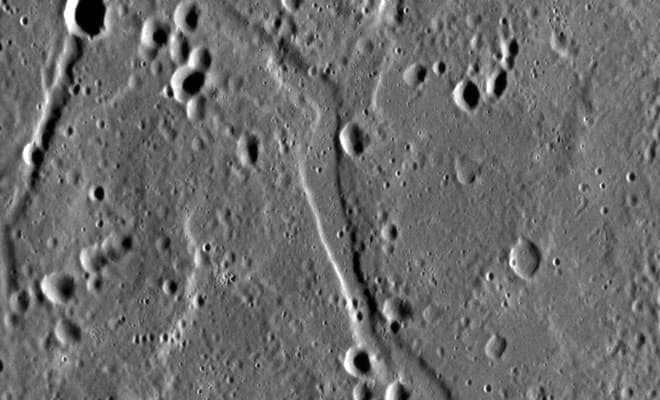
- No volcanic activity has been detected on Mercury for the past billion years;
- The temperature fluctuations on the planet are extreme, with a difference of up to 600 degrees Celsius;
- The core of Mercury is inactive and the planet itself is considered to be inert;
- The surface of Mercury is scorched and scarred by constant attacks from the Sun. Multiple craters and mountain ranges up to 5 kilometers high can be observed on its surface;
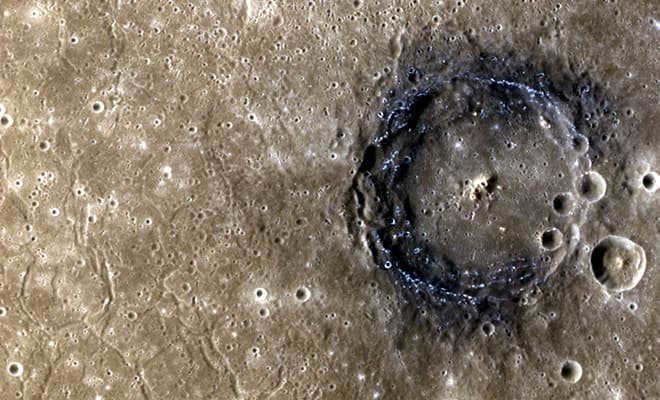
- Mercury completes one revolution around the Sun and turns on its axis only once and a half times;
- A day on Mercury is twice as long as a year on Earth, lasting 176 Earth days, while a year on Mercury lasts 88 Earth days;
- When viewed from Mercury’s side, the size of the Sun appears to change several times. This change is due to the planet’s elliptical orbit and its varying distance from the Sun throughout the day. The Sun appears larger when the planet is closer and smaller when it is farther away from the star;
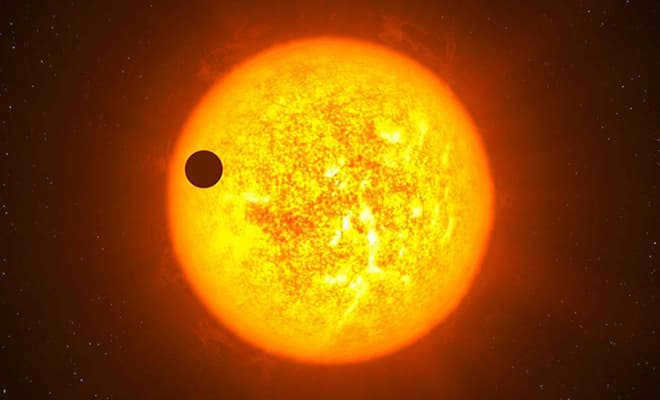
- Every time Mercury gets closer to the Sun, its velocity increases and then decreases once again;
- The sun rises two times a day on this planet;
- Some astronomers hypothesize that on the dark side (within deep craters of frozen soil) there are preserved ice blocks that were brought here by comets;
- Conducting research with optical instruments is impossible: the planet is situated too close to the Sun, and scientists are not willing to take risks with the most powerful Hubble telescope;
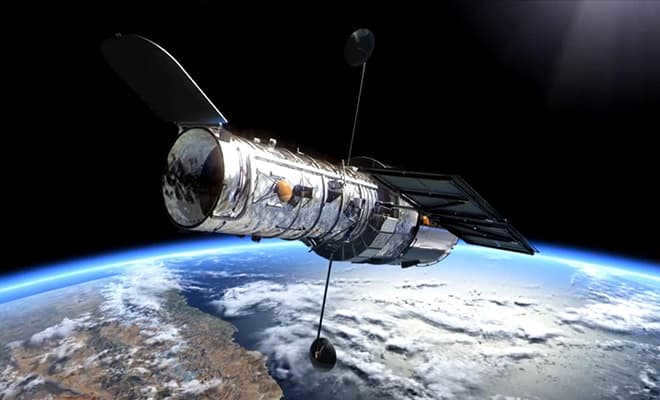
- It has a diameter of 5,000 kilometers;
- The atmosphere is so thin that it is practically nonexistent;
- The strength of its magnetic field is only 1% of Earth’s;
- Mercury’s size is constantly decreasing because of its inertia;
- The distance between the planet and the Sun is the smallest – 45.9 million kilometers, which is 7 times smaller than the distance between the star and Earth.
Exploring the planet Mercury: A Journey into the Unknown
The exploration of the enigmatic planet Mercury is a fascinating endeavor that involves a unique and complex process. The journey begins with the launch of satellites, which embark on a thrilling adventure that lasts approximately 5-6 months. During the first three months, these satellites navigate through space, making their way towards the neighboring planet Venus.
As they approach Venus, the powerful gravitational field of this celestial body exerts its influence, redirecting the satellites towards their ultimate destination – Mercury, the closest planet to the Sun. This gravitational assist from Venus serves as a crucial maneuver in ensuring a successful rendezvous with Mercury.
In March 1974, the long-awaited encounter between the research equipment and the mysterious planet finally took place. This historic moment marked the beginning of a new era in our understanding of Mercury and its unique characteristics.
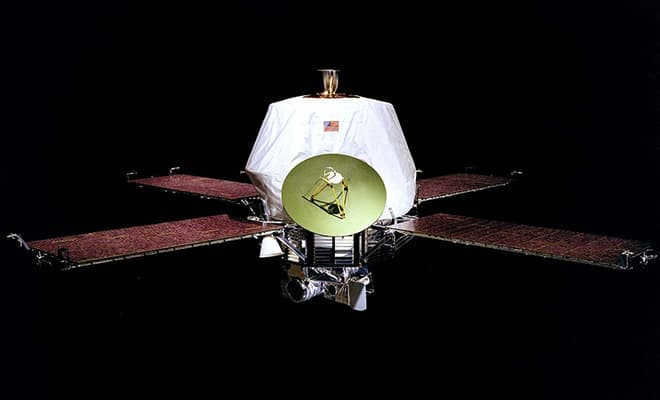

Mariner-9 completed three orbits around Mercury. Thanks to the images obtained, scientists were able to observe the planet, its surface, faults, and craters in great detail for the very first time. Additionally, another technique successfully captured the aftermath of a comet’s impact – the Caloris crater, which measures 1300 km in diameter. In total, there were two satellite missions that contributed to our understanding of this enigmatic planet.
Mercury is currently the smallest planet known in the Milky Way. It continues to captivate with its mysteries and is highly elusive to research endeavors. A significant portion of the knowledge astronomers possess about it is derived from satellite research campaigns, although this accounts for just 45% of the estimated information. The “white spots” on Mercury remain a perplexing aspect of the cosmos, constantly astonishing with their enigmatic nature.
Throughout history, people have gazed at the sky and the stars, utilizing them for predictions, navigation, and more. Scientists devote themselves to the exploration of planets and stars. So, which planet holds the title for being the smallest?
Planets that are smaller than Earth
When comparing Earth to the other planets in our solar system, one planet that stands out is Mercury. It is the closest planet to the Sun and significantly smaller than Earth. Its small size, combined with its close proximity to the Sun, makes it quite difficult to observe. In fact, it wasn’t until 2009 that scientists were able to create a complete map of Mercury. They relied on images captured by the spacecrafts “Messenger” and “Mariner-10”. The radius of this petite planet is approximately 2439.7 ± 1.0 km.
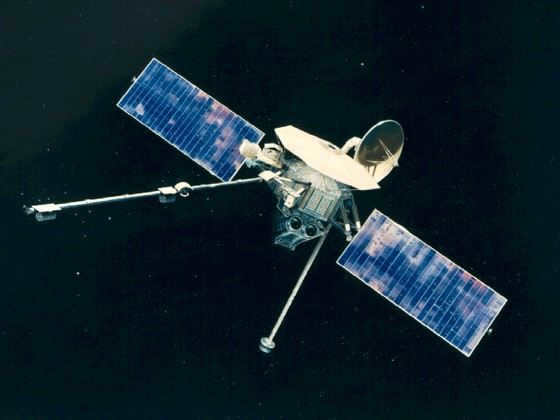
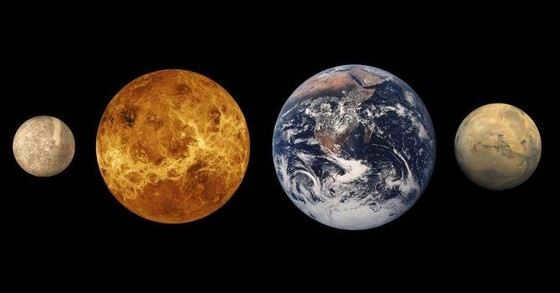
The field of planetology proposes that it is highly probable that this planet had oceans resembling those found on Earth at some point in its history. Despite the fact that multiple spacecraft have explored its surface, this planet remains relatively unexplored. It is worth mentioning that none of these spacecraft were able to operate for more than two hours due to the challenging conditions. However, it is thanks to these spacecraft that the first images of this planet’s surface were captured and transmitted to Earth in 1975.
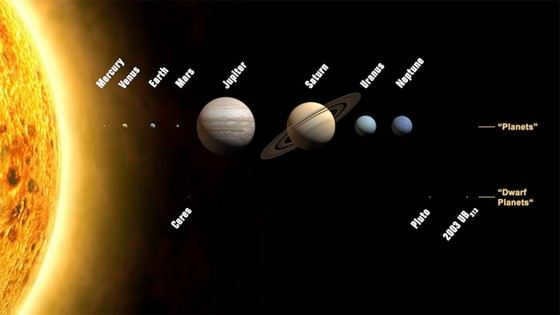
Mars, another planet in our solar system, is significantly smaller than Earth. It earned the nickname “red planet” because of the iron oxide that covers its surface. The planet was named after the ancient Roman god of war. Mars has two natural satellites, Deimos and Phobos, which scientists from various countries are currently studying. According to their findings, there is a possibility of water on Mars, although it is not in a liquid state due to the low pressure on the planet’s surface. These discoveries indicate that primitive life forms may exist on Mars.
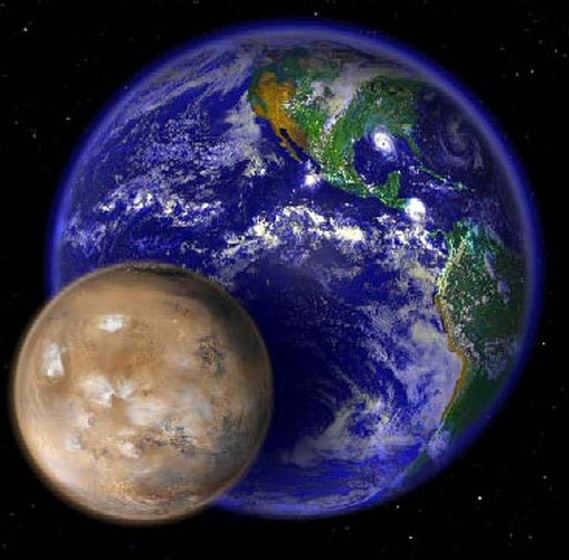
By means of investigation and the efforts of Mars rovers, scientists have made the discovery that the surface was previously submerged in water. The planet’s climate is subject to seasonal changes, with an average temperature of minus fifty degrees. Mars is observable to the human eye without the need for any visual aid. It is understood that its mass is less than eleven percent of the Earth’s mass.
The tiniest planets in the solar system
Pluto used to hold the title of the smallest planet in the solar system for a significant period. However, its planetary status was revoked in 2006, causing it to lose its prestigious position. This decision was made because numerous celestial bodies larger than Pluto had been discovered by then. Presently, stripped of its planet label, Pluto is classified as one of the minor planets and is officially named 134340 in the Central Minor Planets catalog. Despite the passage of time, not all scientists are in agreement; some still argue that Pluto should be reinstated as a planet.
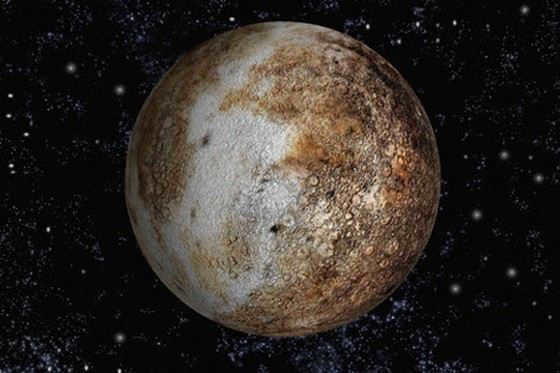
Currently, the tiniest planet in our solar system is officially recognized as Mercury. It has a high velocity compared to other planets, likely the reason behind its given name. As we know, the swift-footed god of commerce was named Mercury. Mercury has a mass of 3.3-1023 kilograms, which is approximately 0.055 times the mass of Earth. Given its density, it is reasonable to assume that the interior of Mercury contains a significant amount of metals. This diminutive planet completes its orbit around the sun in eighty-eight Earth days.
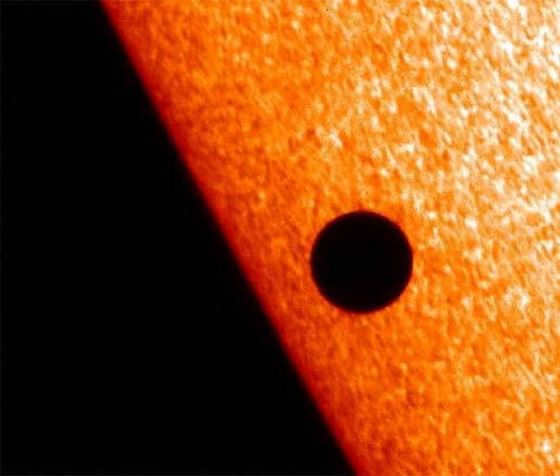

Mercury remains relatively unexplored, however, it is understood that it lacks any natural satellites. Notable characteristics of this planet include its rugged terrain and numerous impact craters.
The tiniest planet in the entire galaxy
Just a few decades ago, our knowledge of planetary systems was limited to our own solar system within the galaxy. Scientists could only speculate about the existence of countless other star systems beyond our own.

The Milky Way is the name given to our galaxy. At present, it is not feasible to determine the exact count of planets within it. With the knowledge that the Milky Way consists of hundreds of billions of stars, it can be reasonably concluded that the Galaxy houses at least hundreds of billions, if not trillions, of planets. Out of this immense assemblage of celestial bodies in the Milky Way, only a minute fraction has been examined. Due to this limitation, it remains uncertain which of these planets is the tiniest in size.
